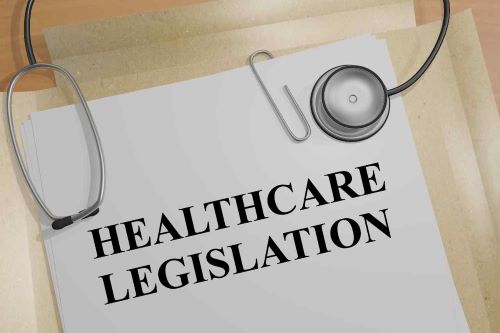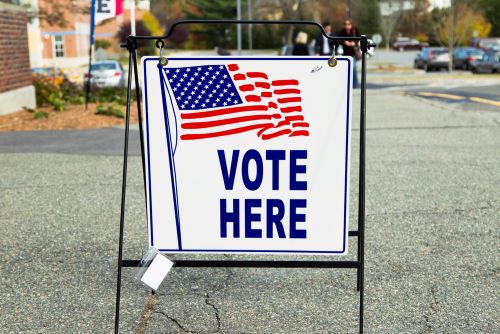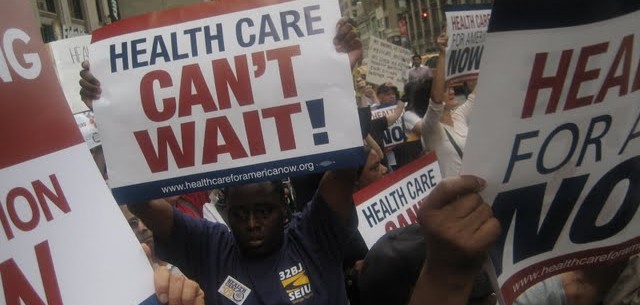2022 was another busy year for us as in our quest for health care justice and universal health care. We thank everyone who helped make our achievements possible with your participation and support, even if it was only financial. All in all, we couldn’t do it all without you! We want to provide a recap of what we worked on and helped to accomplish during 2022 in partnership with our advocate colleagues.
Here’s some highlights:

Improving access to public health insurance coverage (as part of the FY 2022-23 NY State Budget enacted in the early Spring):
Improving access to public health insurance coverage (as part of the FY 2022-23 NY State Budget enacted in the early Spring):
- The Medicaid income eligibility level for low-income seniors and people with disabilities is raised to be comparable to that for all other low-income people and households who qualify for Medicaid.
- Pending approval by the federal government, Essential Plan income eligibility level is raised to 250% of the Federal Poverty Level (FPL) (a number that varies based on household size and composition.)
- Medicaid eligibility is opened up to all immigrants over age 65 regardless of immigration status.
- Medicaid coverage for low-income women who’ve given birth is expanded to a full year post-partum, regardless of immigration status.
- Allowable Medicaid financial asset levels for low-income people on Medicare are raised to $28,000+ (individuals) and nearly $39,000 (couples).
- Income eligibility levels for Medicare Saving Programs (MSPs) are raised for low-income people up to 186% FPL. (MSPs help low-income people on Medicare who do not also qualify for Medicaid to pay for their Medicare premiums, deductibles, and co-pays.)
- Financial asset tests for MSPs are eliminated.
- Nominal $9 per child per month premiums for Child Health Plus are eliminated for lower-income families.

Curbing medical debt in New York (stand-alone bills enacted in the late Spring):
- Prohibiting health care providers from seeking wage garnishments and liens on primary residences when suing patients with outstanding medical bills.
- Requiring health care providers to inform patients in advance of any facility fee they may be charged.
- Prohibiting health care providers from charging “facility fees” for preventive health services.

Improving Rx drug and health insurance affordability (as part of the new federal “Inflation Reduction Act”, enacted during the Summer):
- Free vaccines for people for on Medicare (started on Jan. 1, 2023.)
- $35/mo. co-pay cap for insulin prescriptions (started on Jan. 1, 2023.)
- Capping annual Rx drug price increases to the general rate of inflation (started on Jan. 1, 2023.) (Historically, these prices have gone up much faster each year, which compound over time.)
- Eliminating the income cap to be eligible for premium subsidies for Affordable Care Act health insurance plans available on government online marketplaces (available for 2023.)
- Increasing the amount of premium subsidies for people who purchase health insurance plans available on government online marketplaces (available for 2023.)
- Eliminates the 5% co-pay rate for Rx drugs covered during the Medicare Part D catastrophic phase (starts in 2024.)
- Raises the income eligibility level for Medicare Part D “Extra Help” benefits up to 150% FPL (starts in 2024.)
- Limits annual premium increases for Medicare Part D to 6% (starts in 2024.)
- Caps total out-of-pocket costs for Rx drugs covered by Medicare Part D to $2,000 per year (starts in 2025.)
- New negotiated Rx drug prices go into effect for people on Medicare (starts in 2026.)

The midterm elections (during the Fall):
While we do not endorse candidates nor tell people who to vote for, during election seasons we do help people and media outlets understand:
- candidates’ positions and records on health care issues.
- the ins-and-outs of the salient health care issues that are being debated.
- “what’s at stake” in an election for health issues going forward.
…so that people can make informed decisions when they go to the polls.

Whew! How did we do all this?
At the state level, with our partners in Health Care for All New York and Medicaid Matters New York, both statewide coalitions that advocate for the needs and concerns of patients and consumers.
At the federal level, with our partners in the Health Care for America, Now New York State Network, a statewide coalition we coordinate that is part of a national multi-constituency coalition.
It is a truism in social justice work that passing a policy goal into law is only the first step. Then comes making sure the new law gets properly implemented. In addition, there’s informing directly-affected people, the general public, community leaders, and media professionals about the new law. Finally, since any particular law rarely solves a problem fully, there’s always planning for “what’s next?”, to continue to striving toward the goal and carry the work forward step-by-step. Throughout, it’s always important to celebrate our victories, recognize and appreciate those who contribute to our successes, evaluate lessons learned, and recalibrate as we keep pushing ahead.
Again, many thanks to everyone who helped make all this happen with us– we couldn’t have done it without YOU!
Best wishes to all for the year ahead,
